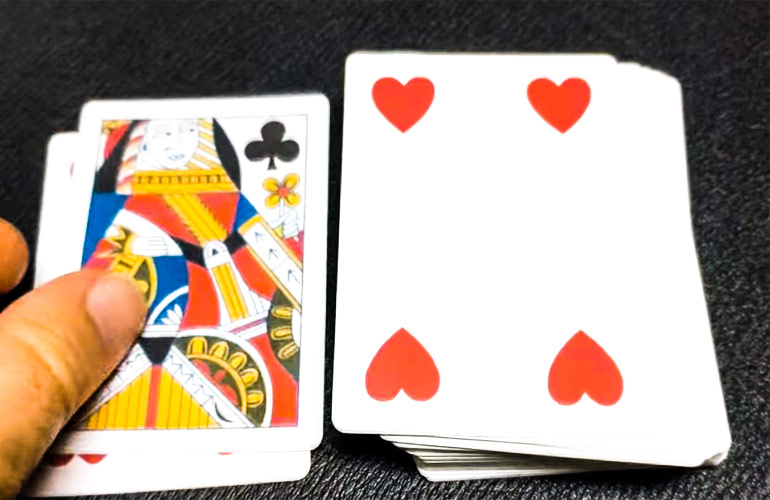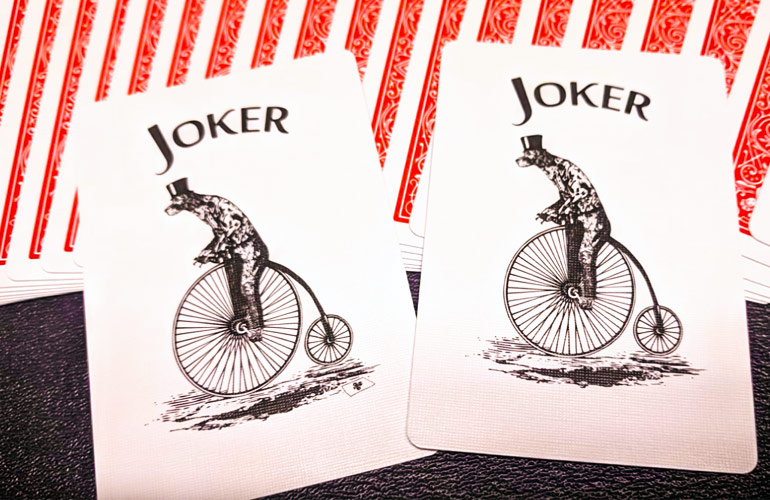Before poker became popular, Faro was the most played game in the west. The main reasons for such a high popularity of the game are simple rules, fast-paced game, and high winnings.
Interestingly, Faro can play any number of players, and there were usually ten to thirteen people playing at the same time. It originated in France in the 17th century. When the game arrived in England, its name was changed from Pharoah to Pharo. Eventually, in the nineteenth century, it finally arrived in the U.S. and got its final name, Faro, which remained to this day.
While the game was among the most popular card games once, it might be difficult to find a place where you can play it today. Of course, online casinos might offer you to play it, and this might be the only option.
Rules and How to Play Faro
The first thing you might see is the Faro board or table. It has all cards of the same suit, and it is usually spades, which is used for betting. One of the players or a designated person will act as a banker, and each of the players will play “against” them.
When the game starts, the banker will burn the first card that is also known as soda. Similarly to the poker, the banker will draw cards from the shoe or the dealing box. After burning the first card, there will be fifty-one left in the deck since Faro uses a standard deck of cards. Then, the dealer places two cards on the table. The first one or the banker card is a losing card, and the second one or the player card is the winning one.
Each of the players will place their bets on the table. Naturally, they can place multiple bets and bet even on two adjacent numbers at the same time. Furthermore, they can bet on four even numbers, similarly to the bets in roulette. Players can also place a so-called “high card” bet where they would try to guess if the player’s card will be higher.
Since the suits are not important in Faro, the players bet that the player’s card will be a specific number. If they win, they will get money. If none of the two cards is that number, nothing happens, and the game continues. Finally, if the banker’s card is that specific number, the player will lose.
The banker will pay all bets after each round, and there are twenty-five turns in total. After each round, players will have time to place additional bets. If one of the players has already placed a bet on a certain number and nothing happened, they can either leave the bet or move it to a different number.

When only three cards are left, players can bet on the order of the cards. There will be neither player’s nor banker’s card, and all three would be placed in order.
There is also an option to place a so-called copper bet where the player would place a token or a penny on a specific number. This means that the player bets reversed. For example, if the player placed a copper bet on number six, they bet that the losing card will be six.
Table and Betting Layout
Typically, the table for Faro is oval-shaped with the green blaze. There is a special cut out for the banker, and the dealer will place two cards on the left and right side of the shoe. The right card is the dealer’s or the losing card, and the left one is the winning card. Furthermore, the 13 cards are glued to the table, and they represent betting options.
Interestingly, there is a special device called a casekeep. Similar to the abacus, there is a picture of each denomination, and four spindles representing each suit. Whenever the dealer places the card on the table, they will move the spindle. This way, each of the players can see what cards are left in the deck, so they wouldn’t bet on the number that isn’t in the deck.
When the last round arrives, players will simply check the casekeep and see what three cards remained in the deck.
Cheating
It is worth mentioning that cheating wasn’t a rare occasion in Faro. If it happens that both the dealer’s and the player’s card have the same value, they will split the bet. This means that the player will lose only half of the bet. Since this is the only house edge the casino has, the dealers decided to increase the edge by cheating. On the other hand, players tried to return the favor by finding ways to trick the dealers as well.
The dealer would sometimes use a rigged deck or rigged dealing boxes. Rigged decks would offer many pairs that would help them win half of the bet. These decks usually had textured cards that the dealer allowed them to create pairs. On the other hand, rigged boxes usually had a mirror that only the dealer could see and thus know which card is next.
Finally, the sleight of hand is a trick that both dealers and players used and the idea is to simply move the bet from a winning or losing number.
Players managed to find additional tricks like using a thread to move the bet from the losing number without anyone noticing. The last idea was to attach the thread to the copper token used for reverse bets. The idea behind it was to remove the token and leave only the bet if the token would cause the player to lose.
Naturally, these attempts were never popular with the opponents, and if the cheater was caught, it would result in either a fight or gunfire.
Summary
Even though Faro was one of the most popular games in the 18th century, the regular poker quickly climbed to the top. Today, there aren’t many places where you can play the game, and after World War II, it became even scarcer. The last place where you could play Faro was Las Vegas, and it remained on its repertoire until the end of the twentieth century.
However, even if there is no place in the world that offers this game, you can still play it with friends since it is fun and easy to learn. Furthermore, games like poker will usually require complex strategies, while in Faro, you can jump straight into the fun part of the game.
Did you know that in the U.S., the game was nicknamed Bucking the Tiger? The early saloons usually had a drawing of the tiger outside to show that they offered this popular card game.
